The Indian MMRCA
The situation is now clearer with the IAF needing to augment force levels initially by 126 MMRCA subsequently increasing to 200, and restoring the authorised level of 39.5 squadrons. The IAF has opted for a fourth –generation system for some very sound reasons. – An advanced fourth generation system will enable the IAF to face it’s potential adversaries. The fourth-generation system will require a mid -life upgrade in a decade and by then, the Indo-Russian Fifth Generation Fighter Aircraft (FGFA) would be entering the IAF’s inventory. The FGFA along with the Tejas will form the combat fleet of the IAF in the 2020s.
Qualitative Requirements
The IAF evaluated the six competitors for the MMRCA contract against 660 technical benchmarks and narrowed to two aircraft-the Eurofighter Typhoon and the Dassault Rafale. Besides the extensive tests in their home locations, the competitors were also subjected to rigorous tests in three locations- Bangalore, Jaisalmer and Leh to evaluate the comparative performance under conditions of humidity, extreme heat and high elevation.
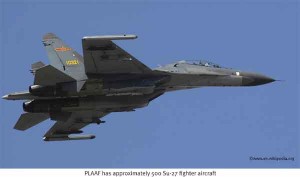 These two aircraft have qualified on the basis of their technical superiority in aerodynamic efficiency and high altitude operations. Priority for the IAF is to select the aircraft with the right mix of technology, sensors, avionics, weapons, aerodynamic effectiveness along with favourable Transfer of Technology (TOT) provisions. The IAF clearly recognises that the success of operations would be greatly enhanced by the ability to attack a wide range of targets with precision munitions, especially at night and in adverse weather. The important characteristics that the IAF emphasised as essential in the RFP were-Aerodynamic Effectiveness, Sensors and Avionics, Defensive Countermeasures Suites (DCS) and finally weapons.
These two aircraft have qualified on the basis of their technical superiority in aerodynamic efficiency and high altitude operations. Priority for the IAF is to select the aircraft with the right mix of technology, sensors, avionics, weapons, aerodynamic effectiveness along with favourable Transfer of Technology (TOT) provisions. The IAF clearly recognises that the success of operations would be greatly enhanced by the ability to attack a wide range of targets with precision munitions, especially at night and in adverse weather. The important characteristics that the IAF emphasised as essential in the RFP were-Aerodynamic Effectiveness, Sensors and Avionics, Defensive Countermeasures Suites (DCS) and finally weapons.
Aerodynamic Effectiveness
Aerodynamic effectiveness is a function of a fighter’s airframe design, engine thrust and the flight control system. While stability is the key for Air-to-Ground operations, agility remains critical for aerial combat. In spite of the advancements in Air-to- Air missiles, agility enables the platform to position itself quickly for the kill or to ward off an incoming missile threat. In the Air-to Ground regime however, stability will enable the platform to track targets with accurately and launch weapons with precision..
Other considerations are care- free handling, low takeoff and landing speeds and supercruise, the ability to fly at supersonic speeds at dry power, which will offer savings in fuel consumption as well as longer loiter times.
Sensors and Avionics
The heart of a multi-role fighter is the Radar capable of performing both Air-to-Air and Air-to-Ground functions equally well. The IAF has asked for the Active Electronically Scanned Array (AESA) Radar. Unlike earlier Radars that had a single Transmitter/Receiver (Tx/Rx), the AESA has hundreds of individual low powered Tx/Rx modules whose separate emissions collectively form the radar beam. The AESA radar is characterised by high power (hence longer range), low noise (difficult to detect by enemy ESM platforms), ability to detect, locate and track targets, while simultaneously avoiding being jammed through frequency hopping techniques. It’s ability to map as well as perform other Air-to-Ground functions by night and in bad weather, enables it, more than any other technology today, to help pilots achieve that crucial advantage, which is necessary to win the air war.
The IAF has also demanded core design data associated with key technologies, such as engines, radar and EW components, and systems integration more generally and that the winning contender be prepared to share complete manufacturing technology.
Besides the AESA, sensors such as Infra Red Search and Tracking (IRST),Forward Looking Infra Red (FLIR) pod, superior EW systems that permit effective and safe penetration to targets in the face of integrated air defence systems, weapons delivery systems that ensure a high probability of successful attack and a variety of specialised munitions that would be necessary for executing the various ground attack operations – interdiction, maritime strike, battlefield strike etc, make up the total package.
The aircraft also should have superior combined multifunction displays, helmet-mounted sights and head-up displays as well as Hands-On Throttle And Stick (HOTAS) controls for ease of pilot response. In the area of Systems Integration, both the European competitors in the MMRCA program have demonstrated better sensors and more effectively fuse the information derived from them to ease the pilot’s workload during combat.
Defensive Countermeasures Suites (DCS)
The contemporary DCS is an integrated package that include:-
- Radar Warning receiver (RWR)-that locates, identifies and prioritizes threat emissions,
- Self- Protection Jammer that is capable of precisely capturing and accurately retransmitting the received target Radio Frequencies (RF) to jam or degrade them thus preventing successful attacks,
- Missile Approach Warning System that alerts the mother aircraft that it is being illuminated by laser range finders or by infra-red missiles,
- and finally expendables like Chaff or Infra-red flares, including Active Towed Radar Decoy which trails a device that emits a RF jamming signal in order to decoy attacking missiles away from the mother aircraft.
Weapons
This last consideration will be broad brushed by design, as the list of weapons that can be carried by any one of these fighters will change with the availability and ease of modification on the mother platforms. Suffice it to say that in general, there will be Air-to-Air missiles, guns and Air-to Ground weapons (Bombs, Rockets and guided missiles).
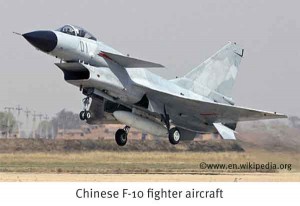 The IAF has also demanded core design data associated with key technologies, such as engines, radar and EW components, and systems integration more generally and that the winning contender be prepared to share complete manufacturing technology. Some specific characteristics of the Typhoon and the Rafale are covered in the succeeding paras.
The IAF has also demanded core design data associated with key technologies, such as engines, radar and EW components, and systems integration more generally and that the winning contender be prepared to share complete manufacturing technology. Some specific characteristics of the Typhoon and the Rafale are covered in the succeeding paras.
The Eurofighter Typhoon
The Eurofighter Typhoon is a twin-engine canard-delta wing multirole aircraft designed and built by a European consortium of four companies: Alenia Aeronautica, BAE Systems, CASA of Spain and EADS through a holding company, Eurofighter GmbH, which was formed in 1986. The aircraft has high agility at supersonic speed and the only one of the competing fighters with supercruise capability.
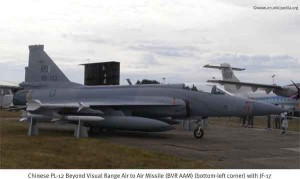 Eurofighter is offering the Tranche-3 Typhoon for the Indian requirement, equipped with the Captor-E (CAESAR) AESA radar, likely to be available at the time of delivery. EADS has also invited India to become a partner in the Eurofighter Typhoon program, if the Typhoon wins the contract, and will be given technological and development participation in future tranches of the Typhoon. Bernhard Gerwert, CEO of EADS Defence Department, elaborated that if India becomes the fifth partner of the Eurofighter programme, it will be able to manufacture assemblies for new Eurofighters. EADS also offered to include thrust vectoring nozzles (TVNs) with the Typhoon’s EJ200 engines for India. Thrust vectoring will improve operational capabilities, and reduce fuel burn by up to 5 percent and increase thrust by 7 percent while cruising at supersonic speeds. It could also be used to reduce approach speeds, takeoff and landing distance, as well as fly safely with asymmetrical loads. TVN is linked to carrier landing capability, as it permits a trimmed approach at a lower angle of attack and overcomes a problem with earlier “Seaphoon” studies—the big radome that interposed itself between the pilot’s eyes and the ship.
Eurofighter is offering the Tranche-3 Typhoon for the Indian requirement, equipped with the Captor-E (CAESAR) AESA radar, likely to be available at the time of delivery. EADS has also invited India to become a partner in the Eurofighter Typhoon program, if the Typhoon wins the contract, and will be given technological and development participation in future tranches of the Typhoon. Bernhard Gerwert, CEO of EADS Defence Department, elaborated that if India becomes the fifth partner of the Eurofighter programme, it will be able to manufacture assemblies for new Eurofighters. EADS also offered to include thrust vectoring nozzles (TVNs) with the Typhoon’s EJ200 engines for India. Thrust vectoring will improve operational capabilities, and reduce fuel burn by up to 5 percent and increase thrust by 7 percent while cruising at supersonic speeds. It could also be used to reduce approach speeds, takeoff and landing distance, as well as fly safely with asymmetrical loads. TVN is linked to carrier landing capability, as it permits a trimmed approach at a lower angle of attack and overcomes a problem with earlier “Seaphoon” studies—the big radome that interposed itself between the pilot’s eyes and the ship.
The Dassault Rafale
The Rafale is a French twin-engine delta-wing multi-role fighter aircraft, designed and built by Dassault Aviation. Being 100 per cent French provides Dassault a distinct edge over its competitors on the issue of technology transfer. Dassault has also offered to fit the Kaveri engine into the Rafale, which, if chosen, would greatly improve commonality with the LCA Tejas aircraft.
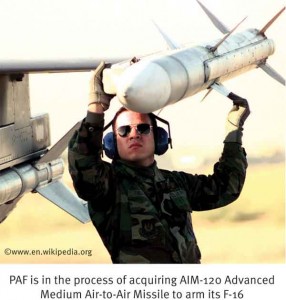 The French government has also cleared full technology transfer of the Rafale as well as the transfer software source codes which will allow Indian scientists to re-program the radar or any sensitive equipment if needed. If selected, it will be built to the F3+ standard, which is due to be equipped with a multi-mode AESA radar to provide the aircraft with advanced air-to-air and air-to-ground capabilities, an integrated IRST along with other sensors. These sensors support a highly manoeuverable delta-wing airframe, which, unfortunately, has not yet realised its full potential because of its underpowered M88-2 engines which are scheduled to be replaced by the M88 ECO in the future.
The French government has also cleared full technology transfer of the Rafale as well as the transfer software source codes which will allow Indian scientists to re-program the radar or any sensitive equipment if needed. If selected, it will be built to the F3+ standard, which is due to be equipped with a multi-mode AESA radar to provide the aircraft with advanced air-to-air and air-to-ground capabilities, an integrated IRST along with other sensors. These sensors support a highly manoeuverable delta-wing airframe, which, unfortunately, has not yet realised its full potential because of its underpowered M88-2 engines which are scheduled to be replaced by the M88 ECO in the future.
Cost Analysis
The overall cost of this project is expected to be around $10-15 billion. Besides the purchase cost, the maintenance and upkeep costs need to be factored in as these cover seventy percent of the total lifecycle costs of an aircraft. There are three processes that have to be gone through, while arriving at the costs. The first is the commercial bid, followed by the offset bid, and then there is the transfer of technology. The final price, L1, is a composite of these three factors.
The model for air-to-air combat has changed in the past decades, from fighters engaging in within visual range combat directed by ground control stations to BVR engagements supported by tankers and AWACS.
Hence, the Indian negotiation team will have to strike a hard bargain to include vital aspects of transfer of technology, source codes for the AESA, Electronic Warfare systems and other critical sensors besides ensuring that Indian public and private sector companies are given commercial contracts in the manufacture of this fourth generation fighter. So the deal will go in favour of the company that provides the best technology at the best available price.
The Importance of the MMRCA to the IAF
The IAF can be satisfied that the technical evaluation has been completed in time and without any impediments. The new aircraft will be important to the evolution of the IAF and the contract is designed to account for at least one-third of the nation’s aircraft over the course of thirty years. The numbers alone will give the IAF the vital edge over the PAF and when the squadron strength reaches or exceeds 39.5, then even China.
The model for air-to-air combat has changed in the past decades, from fighters engaging in within visual range combat directed by ground control stations to BVR engagements supported by tankers and AWACS. Such combat requires superior sensors for both air and ground targets. Thus the IAF will see many changes with the induction of the MMRCA mainly in the regime of Sensors and Avionics, specifically the AESA radar. This highly capable radar will support both Air-to- Air and Air-to-Ground operations.
Technology Transfers and Offsets. The Defence Research and Development Organisation has been facing difficulties in developing an indigenous and effective radar and engines for the LCA. Therefore, it should view the MMRCA competition as an opportunity to energise the country’s aviation capabilities through substantial technology transfers, especially in the areas of sensors, avionics, EW systems and weapons, where India still lags behind the major powers. The Indian Ministry of Defence has already levied the most demanding offsets requirements for the MMRCA competition. Unlike the standard condition which requires foreign suppliers to plough back 30 percent of the procurement value through either direct purchases of Indian products or direct investment in Indian defence industries or organisations engaged in defense R&D, the MMRCA contract demands a whopping 50 percent of the contract value to be invested in building up Indian defence capabilities which should help India become a world class fighter aircraft designer and manufacturer.
Conclusion
The MMRCA as a first step, will enable the IAF to hold its own against the PAF, and when it reaches its authorised strength, to face the PLAAF. The technical evaluation process has been transparent and gone on without a hitch. The AESA radar that the IAF had specified, will be a game changer not only for air combat but equally well during air-to ground operations. Finally, in the area of potential benefits, transfer of technology will enable India to realise her full potential in designing and manufacturing combat jets. The cost of each of these aircraft will be high, but if the Indian negotiators do their job well, the future is assured for the IAF and India.
Notes
- Ashley J. Tellis, “The Air Balance in the Indian Subcontinent,” Defense and Security Analysis, vol. 2, no. 4, December, 1986, 263–289.
- Shalini Chawla,“Modernization of the Pakistan Air Force,” Air Power Journal, vol. 3, no. 2, Summer 2008. A summary of recent and upcoming PAF acquisitions can be found in “Procurement, Pakistan,” Jane’s Sentinel Security Assessment, November 25, 2010.
- Robert Hewson, “Pakistan Joins AMRAAM Club in Biggest-Ever Buy,” Jane’s Defense Weekly, vol. 44, no. 4, January 24, 2007, 14.
- Philip C. Saunders and Erik R. Quam,“China’s Air Force Modernization,” Joint Force Quarterly, no. 47, Fall 2007,28–33, and Kenneth W. Allen, Glenn Krumel, Jonathan D. Pollack, China’s Air Force Enters the 21st Century (Santa Monica, CA: Rand Corporation, 1995).
- Sayan Mazumdar, “The AESA Radar: Key to the M-MMRCA,” Vayu Aerospace and Defence Review, issue 5, 2009, 84.
- Ashok Nayak, “The India Fifth Generation Fighter is Planned for Induction From 2018,” Force, vol. 8, no. 2, October 2010, 12–16.




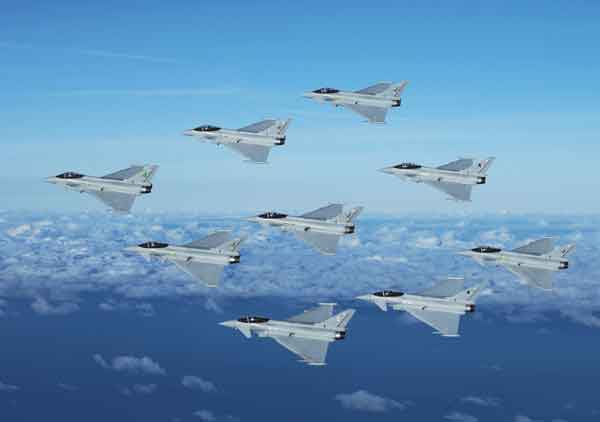

Nice post
That is the best blog for anybody who needs
to find out about this topic. You
understand so much its almost laborious to
argue with you (not that I actually would need…HaHa).
You undoubtedly put a brand new spin on a topic thats been written about for years.
Nice stuff, simply great!
I am so ready to understand why. In this article is the sort
of manual that has to be given and not just the
random misinformation that’s at the other blogs. Thank you for your sharing this best doc.